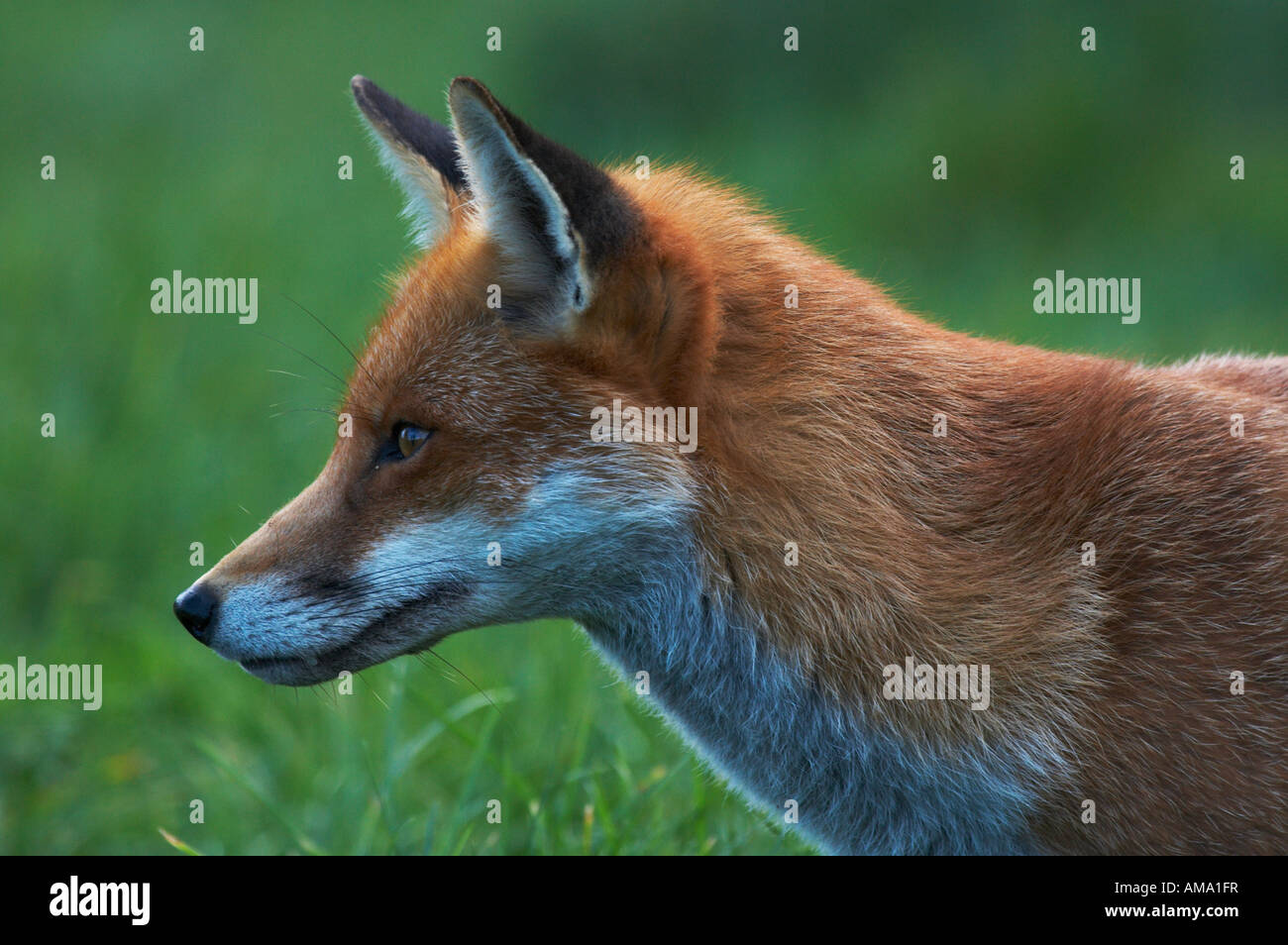A red fox (Vulpes vulpes) profile at the British Wildlife Centre.

Image details
Contributor:
Elliot Smith / Alamy Stock PhotoImage ID:
AMA1FRFile size:
49.5 MB (1.9 MB Compressed download)Releases:
Model - no | Property - noDo I need a release?Dimensions:
5100 x 3391 px | 43.2 x 28.7 cm | 17 x 11.3 inches | 300dpiDate taken:
27 September 2007Location:
British Wildlife Centre, Eastbourne Road, Newchapel, Lingfield, Surrey. RH7 6LF United KingdomMore information:
Fox is a name applied to any one of roughly 27 species of small to medium-sized Canidaes in the tribe Vulpini, with sharp features and a bushy tail or brush. By far the most common and widespread species of fox is the red fox (Vulpes vulpes), although various different species are found on almost every continent. The presence of fox-like carnivores all over the globe has led to their appearance in the popular culture and folklore of many nations, tribes, and other cultural groups. Most foxes live 2 to 3 years, but they can survive for up to 10 years or even longer in captivity. Foxes are generally smaller than other members of the family Canidae such as wolves, jackals, and domestic dogs. Fox-like features typically include an acute muzzle (a "fox face") and bushy tail. Other physical characteristics vary according to their habitat. For example, the fennec fox (and other species of foxes adapted to life in the desert, such as the kit fox) has large ears and short fur, whereas the Arctic fox has small ears and thick, insulating fur. Another example is the red fox which has a typical auburn pelt, the tail normally ending with white marking. Unlike many canids, foxes are usually not pack animals. Typically, they are solitary, opportunistic feeders that hunt live prey (especially rodents). Using a pouncing technique practiced from an early age, they are usually able to kill their prey quickly. Foxes also gather a wide variety of other foods ranging from grasshoppers to fruit and berries. Foxes are normally extremely wary of humans and are not kept as pets (with the exception of the fennec); however, the silver fox was successfully domesticated in Russia after a 45 year selective breeding program. This selective breeding also resulted in physical and behavioural traits appearing that are frequently seen in domestic cats, dogs, and other animals: pigmentation changes, floppy ears, and curly tails.